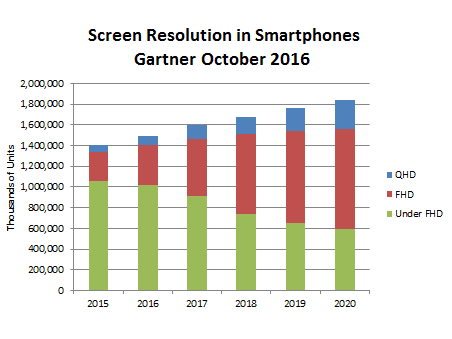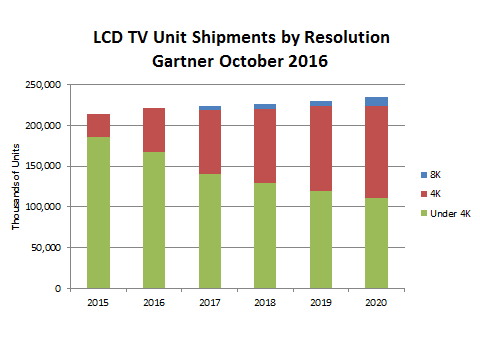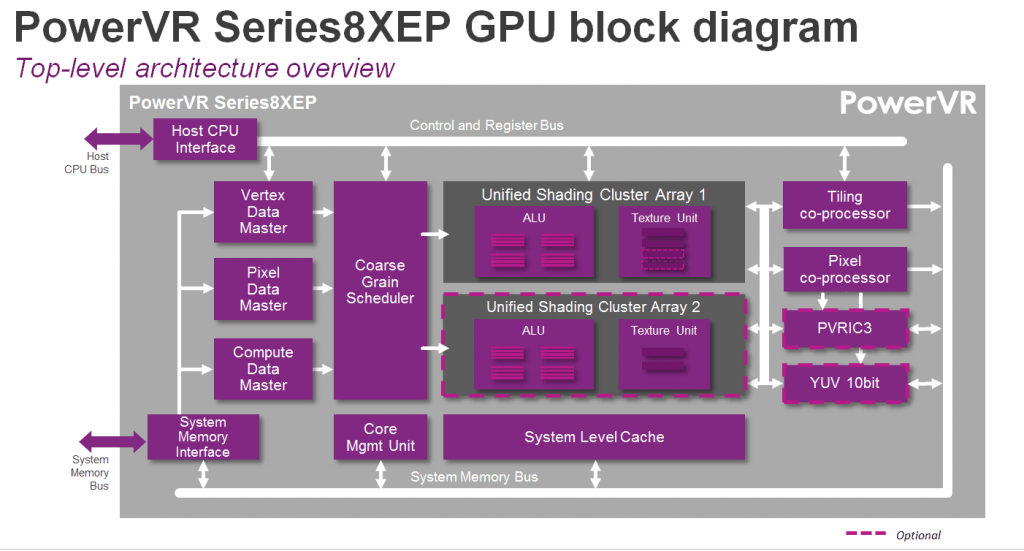- 27 January 2017
- Benny Har-Even
“You speak of the prophecy, of the one who will bring balance to the mid-range smartphone market?” Mace Windu.
Recently, Imagination announced its newest line of PowerVR GPUs – the Series8XE Plus. These new designs build on Imagination’s cost-effective Series8XE GPU offerings and give more choice for SoC manufacturers looking to build mid-range “step-up” chips for the gaming set-top box, automotive, smartphone and tablet markets.
This is particularly good news for those consumers that want a capable phone or tablet but don’t necessarily want to spend a small fortune to get one. While high-end devices naturally remain the headline-grabbers in the media, the mid-range is a market that remains hugely important and accounts for a sizable volume of the market.
What are we defining as mid-range? We’re talking about devices with a typical screen resolution of 1080p. While many of the high-end Android-based handsets sport Quad High-Definition (QHD/2560 x 1440) resolution, in fact, this is still a relatively small part of the market. The majority of devices today have lower than 1080p resolution, with the share of 1080p (Full HD) devices set to grow over the next four years, as illustrated by the Gartner data below.

When it comes to TVs, while 4K is growing in share there is still a lot of mileage left in 1080p screens too. Furthermore, in that in low-end and mid-range STB/DTV markets, most graphics will be rendered at 1080P resolution and then scaled to 4K. This means that even as 4K screens start to dominate, 1080P graphics solutions will remain the sweet spot.

The great news then is that with the launch of the PowerVR Series8XE Plus GPUs, Imagination’s IP will deliver significant improvements to the visual quality on offer in this important market.
So what exactly is Series8XE Plus? To put it into context, Imagination currently offers the Series7XT for premium devices and the Series8XE, first announced this time last year, for the more cost-sensitive GPU market. Both designs are the latest evolutions of our Rogue architecture, first introduced in early 2012.
The Series8XE Plus does not replace the Series 8XE lineup but expands the choices for SoC manufacturers. The baseline GE8300 Series8XE remains, delivering four pixels-per-clock (PPC), while there are now three new options, the GE8320, the GE8325 and the GE8340. All of these also deliver four PPC, but the floating operations per second (FLOPS) performance has increased by two times on the GE8325 and the GE8325, and four times on the GE8340
With four PPC the Series8XE was always strong in terms of painting pixels and getting them to the screen, but with the additional FLOPS performance, these mid-range parts are now more capable of applying the visual effects that make games look fantastic and more compelling to play. Mid-range devices using Series8XE Plus will offer 1080p gaming at improved frame rates and enhanced visual effects.
Crucially for the silicon vendors, this can be done at around 30% lower area compared to our competitors, potentially leading to decreased heat output and a reduced bill of materials.
Architectural improvements
These performance increases are down to the changes in the configurations of the shading clusters containing an ALU and texture unit, applying the vertex and pixel-based effects. However, it’s not just a case of adding more stuff. Improvements to the architecture, in the form of changes to memory burst size distribution, reducing the number of small bursts; means bandwidth is now more efficiently utilised.

As you would expect, the GPUs all support the latest APIs including, OpenGL 3.2, OpenCL 1.2 EP, Vulkan 1.0 and OpenVX 1.1. Imagination is the only GPU vendor currently in the market to offer Open VX 1.1 support. This will enable mid-range smartphone devices to deliver vision and compute capabilities, enabling them to run CNNs and complex vision algorithms, with an API that enables real-world deployment of the vision applications
Current high-end smartphones and desktop devices can perform functions such as face detection in software apps, or fast panoramic stitching and HDR image processing, but might use dedicated silicon to do so. These are functions that consumers will come to expect on their mobile devices, and with the level of performance available in the Series8XE Plus this will now be possible at affordable price points, as dedicated hardware can be effectively replaced by the GPU, which will always be included in the SoC
On top of this, all of Imagination’s current GPUs feature hardware virtualization and OmniShield, our multi-domain security. These two features are particularly applicable for mobile and automotive and could be critical in ensuring hackers do not gain access to high-value content or are not able to take over controls of a car, by running rogue applications on the infotainment system.
The micro-architectural enhancements in PowerVR Series8XE Plus GPUs are now also incorporated into Series8XE GPUs including the one PPC area optimized GE8100 IP core and the eight PPC GE8430 GPU, which has the vastly increased throughput required for high-resolution 2K/4K screens.
Which GPU to choose?
This means that there is now an even wider range of PowerVR GPUs for SoC manufacturers to choose from when shopping for their GPUs. This means that they can differentiate by having the most effective solution for their particular market and segment within that market.
For a premium device, such as a high-end smartphone, a high-end 4K-capable set-top box, or 4K TV with gaming capability, performance rather than cost is the focus and typically a high-end XE part could be considered, such as the eight PPC Series8XE GE8430, or even a part from the XT family.
However, for cost-sensitive devices, there will typically be a calculation done to determine the maximum area available and then to deliver enough performance to meet the product’s needs. The introduction of the Series8XE Plus means there is more opportunity for the SoC vendors to hit a particular performance level at a given silicon area. For example, the Series8XE Plus GE8320 delivers four PPC and twice the FLOPS performance of the entry-level Series8XE GE8300. This balance of fill-rate and FLOPS will bring superior gaming performance to affordable handsets, great news for consumers and game developers alike.

This is important for AR and VR. Awareness and interest in these areas are increasing, and Series8XE Plus will deliver enough performance to offer consumers a better user experience. For those dipping their toes into the VR waters with ‘cardboard’ solutions, it’s important to deliver a good enough experience that will encourage consumers to later upgrade to more powerful VR hardware. Critical to this good experience is reducing the ‘motion to photon’ latency, and the PowerVR architectural optimisations reduce this. The increased performance of the 8XE Plus cores also delivers an increased frame rate, which is also critical to a good VR experience.
The balanced architecture also makes Series8XE Plus a great solution for TVs and set-top boxes, enabling them to offer a mix of smooth UI rendered up to 4K, and satisfying casual gaming. Note that the Series8XE Plus GE8325 offers features designed specifically for the TV set-top box and digital TV markets, which comprises of ASTC and PVRIC3 compression techniques to further reduce memory bandwidth and full 10-bit YUV support to maintain quality throughout the pipeline.

In automotive the 8XE Plus series can provide enough grunt under the hood to power complex dashboard graphics, infotainment and reverse camera video systems, including the potential for some ADAS functions off a single GPU core, all backed by industry-leading security and virtualization capabilities.
Conclusion
In summary, the new Series8XE Plus range builds on the excellent mid-range performance offered by the Series8XE, bringing balance to the market with new options to really match the market’s real-world requirements, across, smartphones and tablets, DTV and set-top boxes and automotive. We look forward to seeing SoCs making use of Series8XE Plus appearing in late 2017 with device availability following that.






